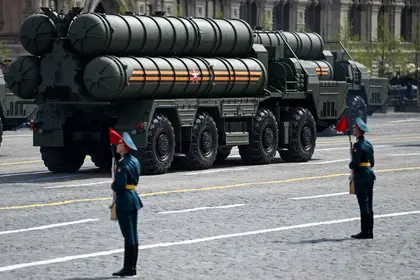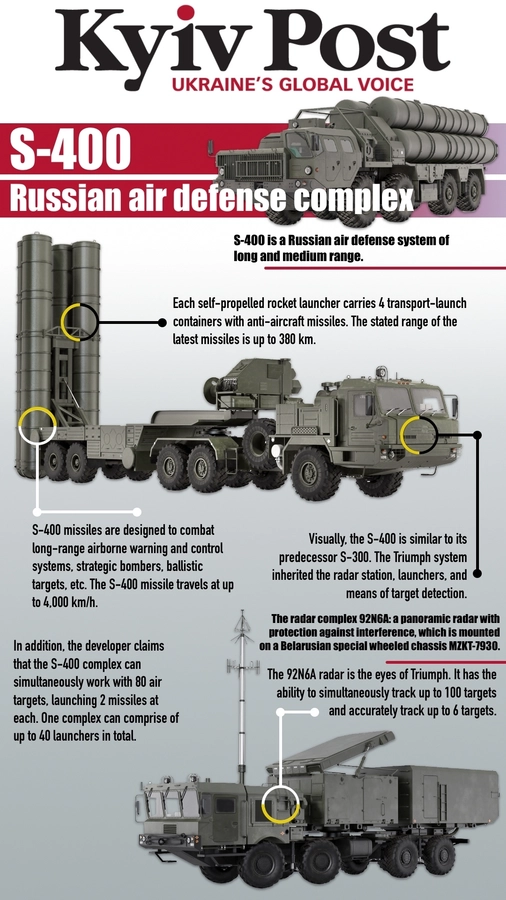On the night of Sept. 13-14, Ukraine destroyed key elements of the Russian S-400 Triumph air defense complex in Yevpatoria, Crimea – the second of two similarly successful operations in Ukraine. Prior to that on Aug. 23, key elements of the same system, including a radar and S-400 launcher, were destroyed near the peninsula’s Cape Tarkhankut.
Russia now faces a hole in its air defense system in Crimea, which may have enabled Ukraine to attack the dry dock of Sevastopol Shipyard, where two vessels of the Russian Black Sea Fleet were undergoing repairs.
JOIN US ON TELEGRAM
Follow our coverage of the war on the @Kyivpost_official.
These were the large Russian landing ship “Minsk” and the “Rostov-on-Don” submarine, latterly capable of carrying four Kalibr missiles that could be targeted on Ukraine. According to reports from Ukrainian intelligence, the vessels may not be salvageable due to severe damage, causing severe headaches for the Kremlin.
All these events are undoubtedly connected. After the destruction of important Russian defense complexes, Ukraine has been able to inflict more strikes on Russian military facilities in Crimea. Damage to the enemy's air defense systems will likely have a knock-on effect on wider activity in occupied Crimea. Indeed, it could be a prelude to the destruction of the Russian Black Sea Fleet altogether.
What is the S-400 Triumph?
The Russian army adopted the S-400 Triumph air defense system back in 2007. At the time, the system was described as an evolutionary continuation of its predecessor – the Soviet S-300 air defense system, but with improved combat capabilities and characteristics.

Moscow Prime Suspect for Sabotage Aimed at Disrupting Olympic Games
The structural characteristic of the S-300 has been preserved in the basic configuration of the S-400. The system includes a command-and-control center, a target detection radar, a multifunctional radar and up to 12 launchers.
Each launcher contains four anti-aircraft missiles. The process of controlling and launching missiles is automated and is carried out in accordance with instructions from the command-and-control center.
The manufacturer – Almaz-Antey Air and Space Defense Corporation – declares that the S-400 air defense system is designed to destroy strategic and tactical aircraft, as well as ballistic and cruise missiles, in conditions of electronic and other forms of countermeasures.
According to the Russian army, 70 percent of the outdated S-300 air defense systems have been replaced by the modern S-400, and a total of about 600 S-400 Triumph launchers have been produced.
The S-400 can utilize seven different types of anti-aircraft missiles. For example, the 40N6E – which entered service relatively recently in 2018 – is capable of hitting aerodynamic targets at a distance of up to 380 kilometers at an altitude of 30-35 kilometers. It can shoot down even ballistic missiles at a maximum distance of up to 60 kilometers.
Meanwhile, the 9M96E and 9M96E2 missiles are designed to neutralize aircraft and tactical ballistic missiles at closer distances, with the possibility of shooting them down at extremely low altitudes. These missiles are much smaller than the 40N6E, so up to 16 can be housed.
It has become customary for the Russian army to use long-range anti-aircraft missile systems for attack purposes. Unfortunately, air defense missiles hitting ground targets do not operate accurately, leading to more widespread destruction of civilian infrastructure and associated casualties. This has not stopped the Russians and such strikes continue, in particular in the direction of Mykolaiv and Zaporizhzhia.
When S-400 systems were damaged in Crimea, their radar stations were knocked out. This made the launchers “blind,” since information about targets comes to the command center from the radar stations. Damage or destruction of the radar therefore paralyzes the operation of the entire complex.
Russia’s S-400 propaganda
With the appearance of the S-400, the Russians began to actively promote the system for export. Russian propaganda at all levels distributed information emphasizing the air defense system to be one of the most powerful in the world.
However, a real war scenario has revealed the shortcomings of this system, especially in the face of attack from Ukrainian drones in occupied Crimea.
Practice shows that the claims of Russian propaganda about the superiority of the S-400 over the US Patriot complex have not materialized, since it is difficult for the Russians to fight even with drones.
Experts from the Swedish Defense Research Agency report that Russia deliberately overrates the characteristics of the S-400 in order to create a stronger advertising effect and to boost exports of the system to other countries. A secondary benefit is Russia’s attempt to intimidate NATO and the US.
Swedish experts suggest that the real range of S-400 missiles is approximately 150-200 kilometers, which differs from the 380 kilometers declared by the manufacturer. In addition, Scandinavian experts doubt the possibility of intercepting ballistic targets at a distance of 60 kilometers. According to them, 20 kilometer is probably more realistic.
The situation for the Russians may become more complicated when Ukraine receives the US ballistic missiles ATACMS. It is quite possible that the S-400 will not be effective enough when used to shoot down such long-range ballistic missiles.
You can also highlight the text and press Ctrl + Enter







